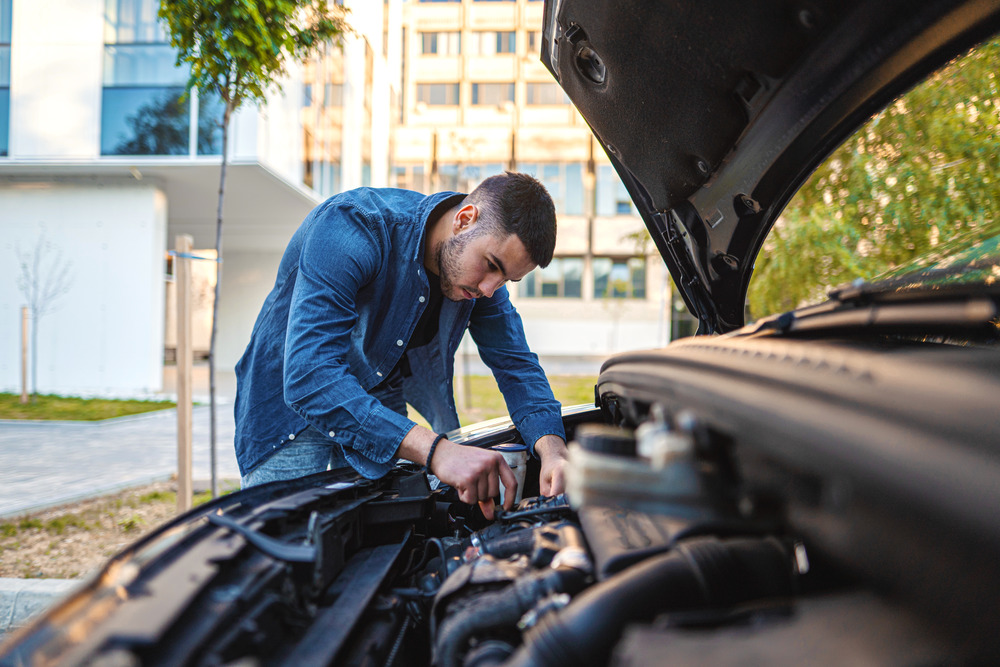Preparing your car for a long journey is important for your safety and peace of mind. Before you hit the road, it’s crucial to check your car thoroughly to avoid car accidents, improve fuel efficiency, and reduce the chances of mechanical problems. This guide will walk you through simple checks that every driver should do before starting a long trip, ensuring your journey is safe and hassle-free.
Tires: Safety First
Your tires are what keep your car connected to the road, so they need to be in good shape. Start by checking the tire pressure with a gauge and inflate it to the level recommended by the manufacturer. Proper inflation not only saves fuel but also gives you better grip and handling. Check the tread depth to make sure it’s enough for safe driving, especially in wet or slippery conditions. Look for any signs of damage like cuts or bulges, and don’t forget to check your spare tire to ensure it’s ready to use in an emergency.
Fluids: Keep Your Engine Happy
Checking your car’s fluids is important to keep everything running smoothly. Begin with the engine oil—use the dipstick to check the level and add more if needed to keep the engine well-lubricated. Good oil reduces friction and helps your engine stay cool. Next, check the coolant level to prevent overheating, especially in hot weather or heavy traffic. Make sure your brake fluid is clean and topped up for effective braking. Also, don’t forget to refill your windshield washer fluid so you can see clearly in all weather conditions.
Lights and Signals: See and Be Seen
Your car’s lights are crucial for seeing the road ahead and letting other drivers know your intentions. Test all your lights—headlights, brake lights, turn signals, and hazard lights—to ensure they’re working properly. Change any non-working or dim bulbs. Clean your headlights and taillights to remove dirt and make sure they shine brightly, especially before driving at night.
You might not be an experienced driver, so donñt let all these steps discourage you. You can find some online materials and make a recap about car parts and safety. You can also apply for some car driving lessons to freshen up and get some more practice if you haven’t driven for a long time.
Brakes: Stopping Safely
Never miss to check the brakes, as they are very important for your car´s safety. Check your brake pads and discs for wear by looking for thinning pads or grooves on the discs. Listen for any strange noises or vibrations when you brake, as these could mean your brakes need attention. Ensuring your brakes are in good shape will help you stop safely in emergencies and everyday driving situations.
Battery and Electrical System: Power Up
A healthy battery and electrical system are essential for starting your car and powering everything from lights to air conditioning. Check the battery terminals for corrosion and make sure they’re clean and tight. Test the battery’s charge level, especially if it’s an older battery or you’ve had trouble starting your car. Also, check the alternator belt to ensure it’s in good condition and charging the battery properly while you drive.
Interior and Comfort: Enjoy the Ride
A comfortable interior makes long journeys more pleasant. Check your seats and seatbelts to ensure they work properly and are comfortable for you and your passengers. Test your air conditioning and heating systems to make sure they keep the cabin at a comfortable temperature. Replace the cabin air filter if it’s dirty to improve air quality inside your car. Keep your interior clean and organized to reduce distractions while driving.
Emergency and Safety Equipment
Along with checking your car, it’s important to carry emergency supplies in case something goes wrong on your journey. Pack a roadside emergency kit with essentials like a first aid kit, warning triangle, flashlight, basic tools, and a fully charged mobile phone with emergency contacts saved. Keep these items easily accessible in your car so you can use them quickly if needed. Don’t forget to carry important documents like your vehicle registration and insurance information.
Taking the time to check your car before a long journey is essential for your safety and comfort on the road. By performing these simple checks on your tires, fluids, lights, brakes, battery, and interior, you can reduce the risk of unexpected problems and enjoy a smoother trip. These checks not only help you avoid breakdowns but also show that you’re a responsible driver who cares about your safety and the safety of others on the road. So, before you start your next adventure, take a few moments to make sure your car is ready for the journey ahead.

